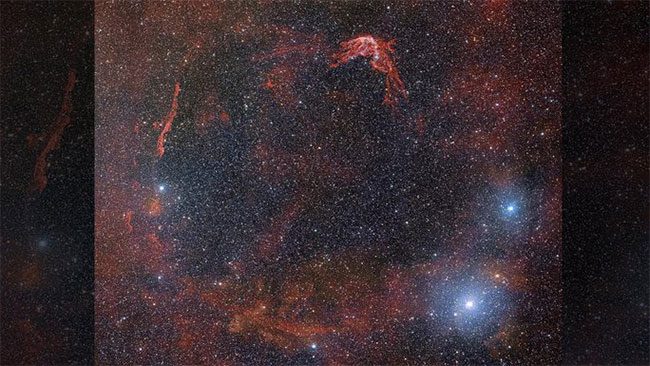The remnants of a cosmic object that ancient Chinese astronomers referred to as “guest star” have been recorded by American scientists in an eerie blood-red light, 1,800 years after its occurrence.
According to Live Science, scientists from the NOIRLab of the U.S. National Science Foundation have recently unveiled stunning images of SN 185, a haunting and fantastical blood-red “ghost” appearing in the sky between the constellations of Lyra and Sagittarius.
SN 185 is not a new object; it is something that once lit up the Earth’s sky 1,800 years ago, described by American scientists as “rising from the cosmic grave.”

“Guest star” from the dead observed by China long ago is now just a mysterious, dim red ghost – (Photo: NOIRLab).
It has been one of the longest-studied objects by scientists worldwide. In the year 185 AD, Chinese historical records documented the sudden appearance of a strange object shining like a star in a place where no stars had existed before, illuminating the night sky of Earth before gradually fading away within a year before completely vanishing.
They called it the “guest star.”
However, modern astronomers confirm that this was the first supernova ever recorded by humanity. It was indeed a star, but one that had reached its death throes, exploding from a distance of 8,000 light-years from Earth.
The remnants of the supernova are currently very diffuse and faint. To capture it, scientists used the Dark Energy Camera mounted on NOIRLab’s telescope in Chile, comparing it with historical records of SN 185, and then significantly enlarging the images for the public to admire.
SN 185 is also identified as a rare Type Ia supernova, one of the brightest supernovae in the universe that explodes much faster than the more common Type II. It occurs with a star that has died twice: first becoming a white dwarf, then the white dwarf continues to accrete material from a companion star until its core reaches a critical mass, causing an extremely powerful nuclear explosion.





















































